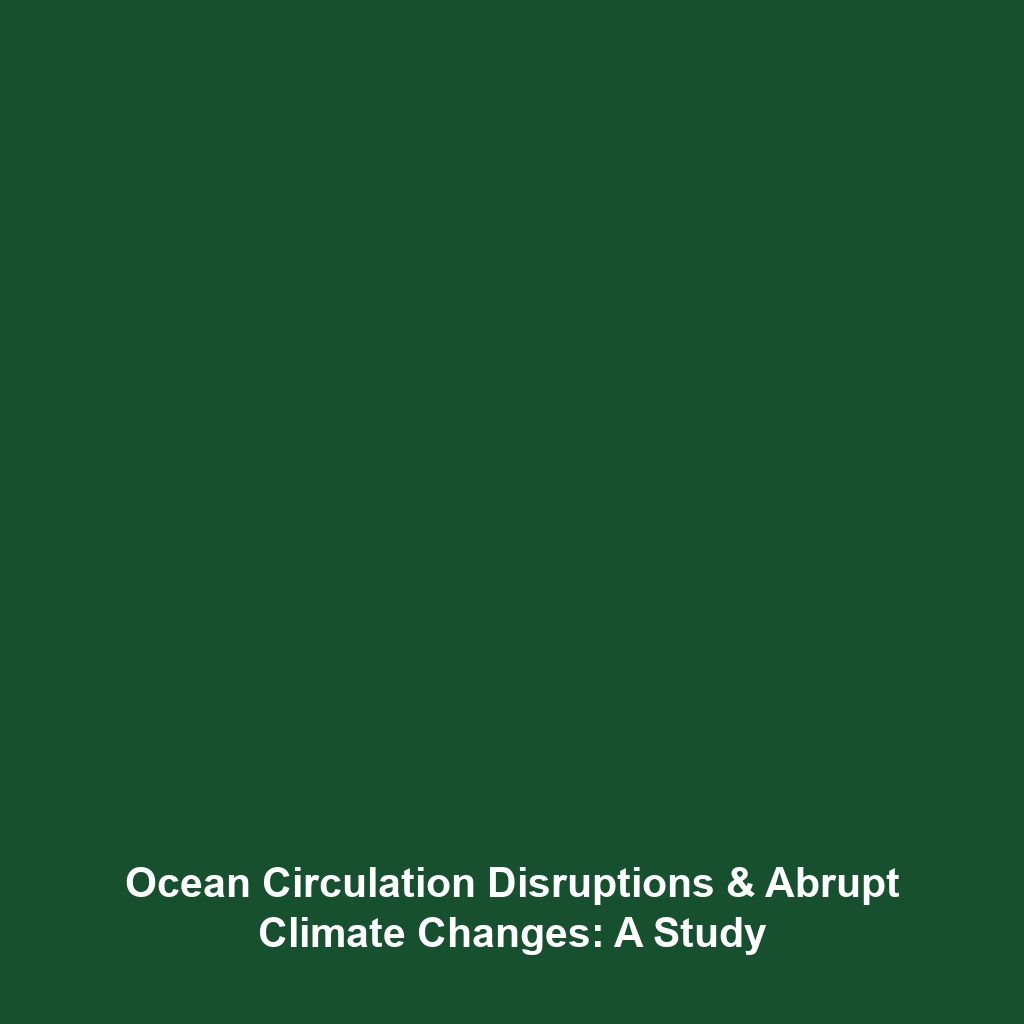Using Paleoclimate Data to Predict Future Climate
Introduction
Utilizing paleoclimate data is pivotal for predicting future climate patterns, as it offers insights into historical climate variations over centuries and millennia. Understanding how climate has changed in the past plays a critical role in the context of climate history, linking ancient environmental changes to current climate trends. By analyzing sediment cores, ice cores, and fossil records, scientists can establish a reliable framework for forecasting potential futures. This article delves into the importance of paleoclimate data in shaping our expectations about future climate scenarios.
Key Concepts
Paleoclimate Data Overview
Paleoclimate data involves evidence gathered from various natural records that reflect historical climate conditions. Major concepts include:
- Proxy Data: Indicators such as tree rings, corals, and glacial ice that provide climate information.
- Climate Models: Computer simulations that utilize past climate data to predict future trends.
- Climate Variability: Patterns and fluctuations in climate that inform researchers about potential future changes.
Interconnectivity with Climate History
The integration of paleoclimate data into climate history studies supports a comprehensive understanding of how human activity may influence future climate trends. Knowledge of cyclical climate patterns becomes an invaluable tool for environmental scientists and climatologists.
Applications and Real-World Uses
Paleoclimate data has several significant applications in predicting future climates, including:
- Urban Planning: Planners use climate predictions to design infrastructure resilient to future climate scenarios.
- Agriculture: Farmers adapt planting strategies informed by long-term climate trends derived from paleodata.
- Disaster Preparedness: Emergency services prepare for climate-related disasters using historical climate patterns to predict future risks.
These applications demonstrate how paleoclimate data is used in the broader category of climate history to mitigate risks and enhance strategic planning.
Current Challenges
Despite its significant benefits, several challenges complicate the study and application of paleoclimate data:
- Data Limitations: Incomplete or biased historical records may lead to inaccurate climate models.
- Technological Constraints: Limitations in technology can hinder the analysis of complex datasets.
- Interdisciplinary Collaboration: Effective research often requires collaboration across various scientific disciplines, which can be difficult to achieve.
Future Research and Innovations
Exciting innovations are on the horizon that may enhance our ability to leverage paleoclimate data for future predictions. Key areas of research include:
- Advanced Climate Modeling: Development of more sophisticated models that integrate a wider array of data sources.
- AI and Machine Learning: Using artificial intelligence to analyze large datasets for better predictive accuracy.
- Collaboration with Indigenous Knowledge: Integrating local and traditional ecological knowledge with scientific research to enrich our understanding of climate history.
Conclusion
In conclusion, understanding how to use paleoclimate data is crucial in informing our projections for future climate and its overarching relevance within climate history. As climate challenges become more pressing, the integration of rich historical datasets will be vital in shaping effective responses. To learn more about the implications of climate research, visit our related articles on climate modeling and environmental policy.

